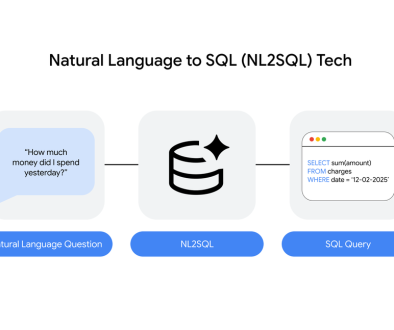GCP – How APIs and ecosystem strategies accelerate digital transformation
Innovation is a topic of conversation in almost every enterprise, but a related topic that sometimes goes under-discussed is co-innovation—that is, the idea that enterprises can unlock a lot of powerful business innovation by partnering outside the organization.
Often called a digital ecosystems strategy, this tactic involves different participants sharing data, functionality, and other digital assets for symbiotic benefit. Enterprise workflows and customer experiences increasingly rely on rich combinations of software from multiple parties, so ecosystem approaches are central to assembling all the data and functionality a business needs to supplement its internal capabilities and drive innovation.
Using APIs to Drive Ecosystem Participation
APIs are the de facto standard for building and connecting modern applications, as they provide a standardized interface that masks backend complexity and makes it simple for an enterprise to secure, monitor, and manage how the digital assets it shares are used. Often, innovation arises not from inventing something new so much as activating existing value in new ways. APIs can facilitate this within an organization by making data and functionality easy for internal developers to access and reuse—but they can also facilitate innovation by opening valuable assets up to external innovators, whether they’re corporate partners or independent developers.
Asurvey of 1,000 CIOs conducted recently by Google Cloud, in partnership with Oxford Economics, found that organizations with API platforms are 11x more likely to rate themselves “well ahead of competitors in terms of digital innovation.” CIOs from companies that have adopted APIs were also more likely to say their relationships drive goals like agility (42% vs. 19%), market intelligence (48% vs. 25%), automation (53% vs. 26%), and employee productivity (49% vs. 33%).

Enabling New Business Models
Many Google Cloud customers demonstrate the power of ecosystem strategies to expand innovation efforts and unlock new business models.
Indonesia’s Bank BRI, for example, made capabilities such as credit scoring available via an API as a paid service, which helped it to develop a digital network of “branchless” agents across many of the country’s most remote regions. This approach has not only extended Bank BRI’s services to new users in areas with little brick-and-mortar banking, but also contributed $50 million in revenue. Whereas Bank BRI recently needed as much as six months to onboard new partners, its API-first approach has reduced that to as little as one hour.
Pitney Bowes and AccuWeather are among those pursuing similar strategies, offering a range of digital services to external parties via APIs in order to expand the reach of their products and the innovation around them.
We’re also seeing these opportunities for co-innovation increase as businesses navigate disruptions related to COVID-19.
With numerous air fleets grounded and passenger flights cancelled in the first half of 2020, for example, many airlines redirected their businesses toward assisting with relief efforts, such as delivering medical supplies. Because many companies in the industry used systems that weren’t built for these new cargo distribution use cases, ecosystem strategies offered a means of bridging gaps when time was of the essence.
CHAMP Cargosystems was among the ecosystem partners ready to step in to help. Via a self-service portal, it offers third parties a range of APIs, such as cargospot, which exposes functionality to submit, track and monitor shipments as well as handle related invoicing, customers, and security compliance processes.
For CHAMP customers, whether they’re navigating COVID-19 disruptions or the more typical day-to-day complexity of international shipping and transport, the ability to plug into a user-friendly software ecosystem has been crucial.
Better Together
Few companies can rely on internal IT to create all the technologies they need to create compelling digital experiences or execute sophisticated online strategies—not when customer behaviors and preferences change so quickly. Ecosystem strategies let businesses focus on what they’re good at while largely relying on partners to help translate those competencies into new markets and new use cases.
It’s a tall order for, say, a retailer to develop homegrown machine learning competencies as quickly as customers may demand related experiences, from voice interfaces to personalized recommendations to customer service chatbots. Likewise, companies developing cutting-edge machine learning solutions do not all have expertise in retail; they need external co-innovators to extend their services into this space. Innovation that hits the bottom line comes from the synergy of the software ecosystem in which the retailer and the AI both participate.
And that’s the point: the rise of ecosystem strategies reflects the recognition that modern digital workflows and experiences require rich software stacks that exceed the internal capabilities of most companies and that must evolve faster than traditional technology partnerships can accommodate. The pressure to innovate and respond to changing customer needs is always intense, particularly in moments of disruption—but by making valuable data and functionality available to outsiders and leveraging similar offerings from other ecosystem participants, a business needn’t carry this entire burden alone. APIs and cloud technologies make these ecosystems more accessible and powerful than ever, and we look forward to the new ways of doing business that Google Cloud customers pioneer as they engage in these strategies.
Visit our website to learn more about API management with Google Cloud.
Read More for the details.




